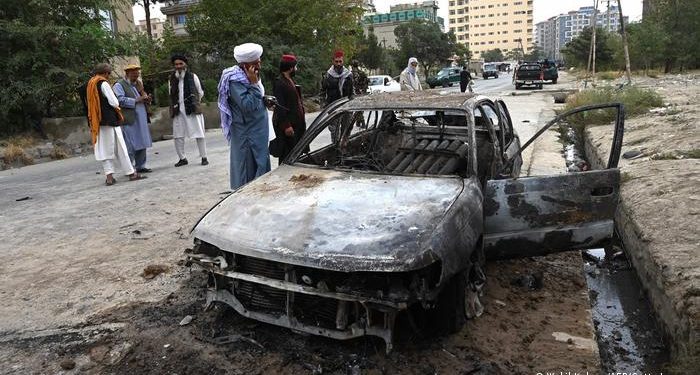Kabul: Rocket fire apparently targeting Kabul’s international airport struck a nearby neighbourhood Monday, the eve of the deadline for US troops to withdraw from Afghanistan after 20 years of war. The Islamic State (IS) group claimed the attack. However, there were no immediate reports of casualties.
The rockets did not halt the steady stream of US military C-17 cargo jets taking off and landing at the airport. Afghanistan’s IS affiliate launched a devastating suicide bombing Thursday at one of the airport gates. The blasts left at least 169 Afghans and 13 US service members dead.
The extremist group is far more radical than the Taliban, who seized power in Afghanistan earlier this month. The two groups have fought each other in the past, and the Taliban have pledged to not harbour terrorist groups.
The Taliban tightened their security cordon around the airfield after the attack. They cleared away massive crowds of Afghans who were desperate to flee the country in the waning days of the US-led airlift. Taliban fighters are now stationed along a fence near the main runway.
In the capital’s Chahr-e-Shaheed neighbourhood, a crowd quickly gathered around the remains of a four-door sedan used by the attackers. The car had what appeared to be six homemade rocket tubes mounted in place of back seats. IS and other militant groups routinely mount such tubes into vehicles in order to move them undetected.
“I was inside the house with my children and other family members, suddenly there were some blasts,” said Jaiuddin Khan, who lives nearby. “We jumped into the house compound and lay on the ground,” he added.
Some of the rockets landed across town in the Salim Karwan neighbourhood, striking residential apartment blocks, witnesses said. That neighbourhood is some three kilometers (less than two miles) from the airport. There were no immediate reports of injuries.
Five rockets targetted the airport, said Navy Capt Bill Urban, a spokesman for the US Military’s Central Command. A defensive weapon known by the acronym C-RAM — a Counter-Rocket, Artillery and Mortar System — targetted the rockets in a whirling hail of ammunition, Urban said.
The system has a distinct, drill-like sound that echoed through the city at the time of the attack.
The IS statement, carried by the group’s Amaq media outlet, claimed the militants fired six rockets.
The White House said officials briefed President Joe Biden on ‘the rocket attack at Hamid Karzai International Airport (HKAI)’, apparently referring to the vehicle-based rocket launch.
Also read: US drone strike targets ISIS-K ‘planner’ in Afghanistan after Kabul blasts
“The president was informed that operations continue uninterrupted at HKIA, and has reconfirmed his order that commanders redouble their efforts to prioritise doing whatever is necessary to protect our forces on the ground,” the statement said, using an acronym for Kabul’s airport.
After the rocket fire, planes continued to land and taxi across to the northern military side of the airport. Planes took off roughly every 20 minutes at one point Monday morning.
One C-17 landing in the afternoon shot off flares as it approached — a maneuver to protect against heat-seeking missiles and a sign that the US Military remains concerned about surface-to-air missiles loose in Afghanistan.
Smoke from several fires along the airport’s perimeter could be seen Monday. It wasn’t clear what was ablaze, although US forces typically destroy material and equipment they won’t take with them.
The airport had been one of the few ways out for foreigners and Afghans fleeing the Taliban takeover. However, coalition nations have halted their evacuations in recent days, leaving the US Military largely alone at the base with some remaining allied Afghan forces.
The White House said Monday that over the last 24 hours, the American military carried out some 1,200 evacuees on 26 C-17 flights, while two coalition flights flew out 50 others. Since the end of July, US Forces have evacuated about 1,22,300 people, it said.
Ross Wilson, the chargé d’affaires at the US Embassy in Kabul now working out of the airport, insisted those evacuations remained ongoing in a message on Twitter.
“This is a high-risk operation,” Wilson wrote. “Claims that American citizens have been turned away or denied access to HKIA by Embassy staff or US Forces are false.” He did not elaborate.






































